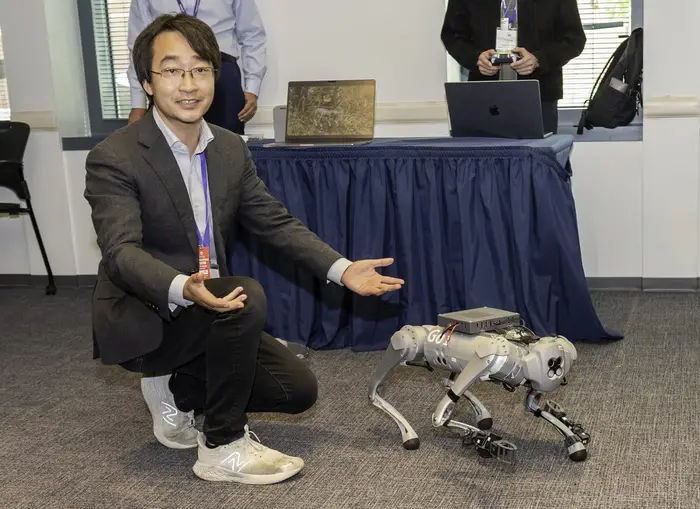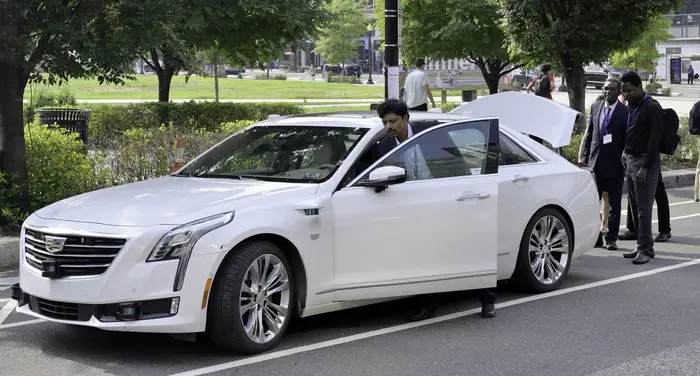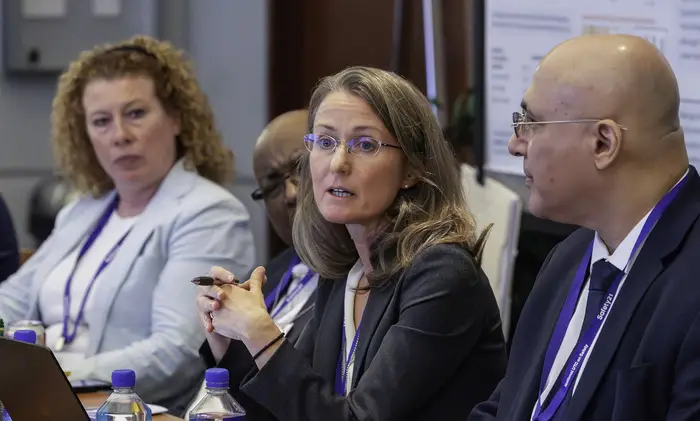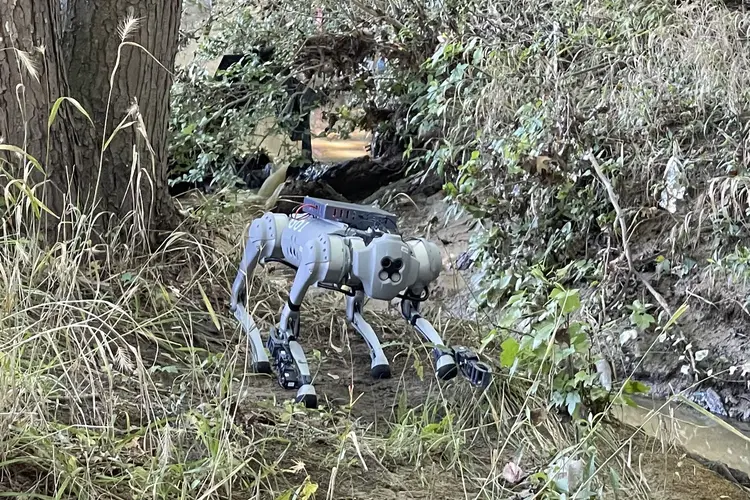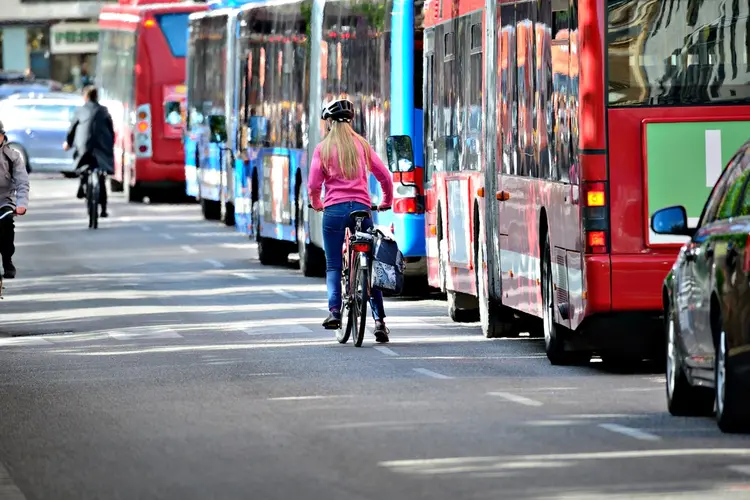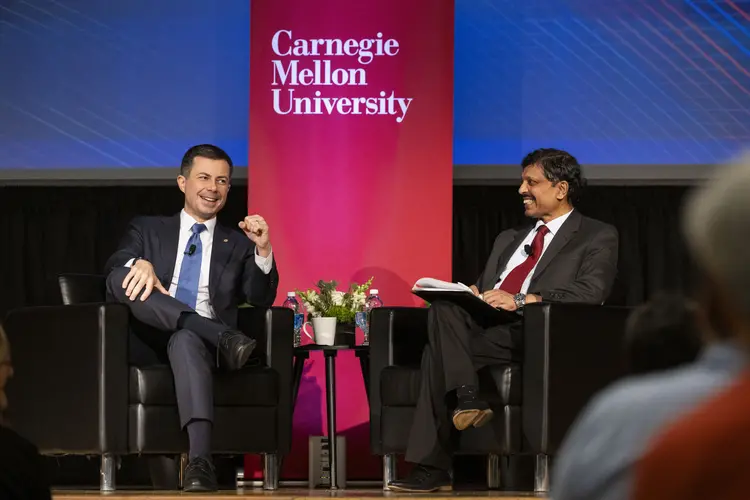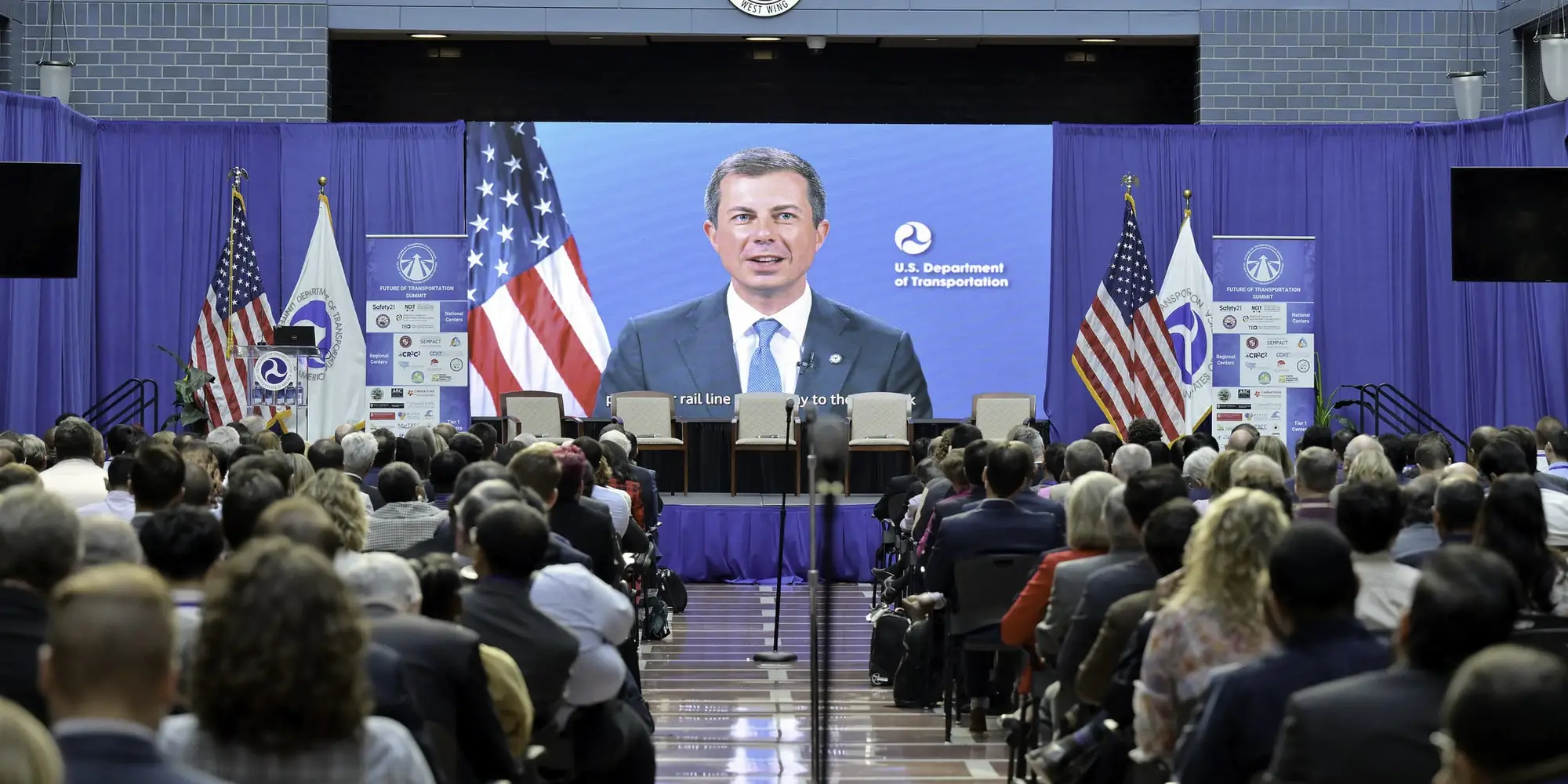

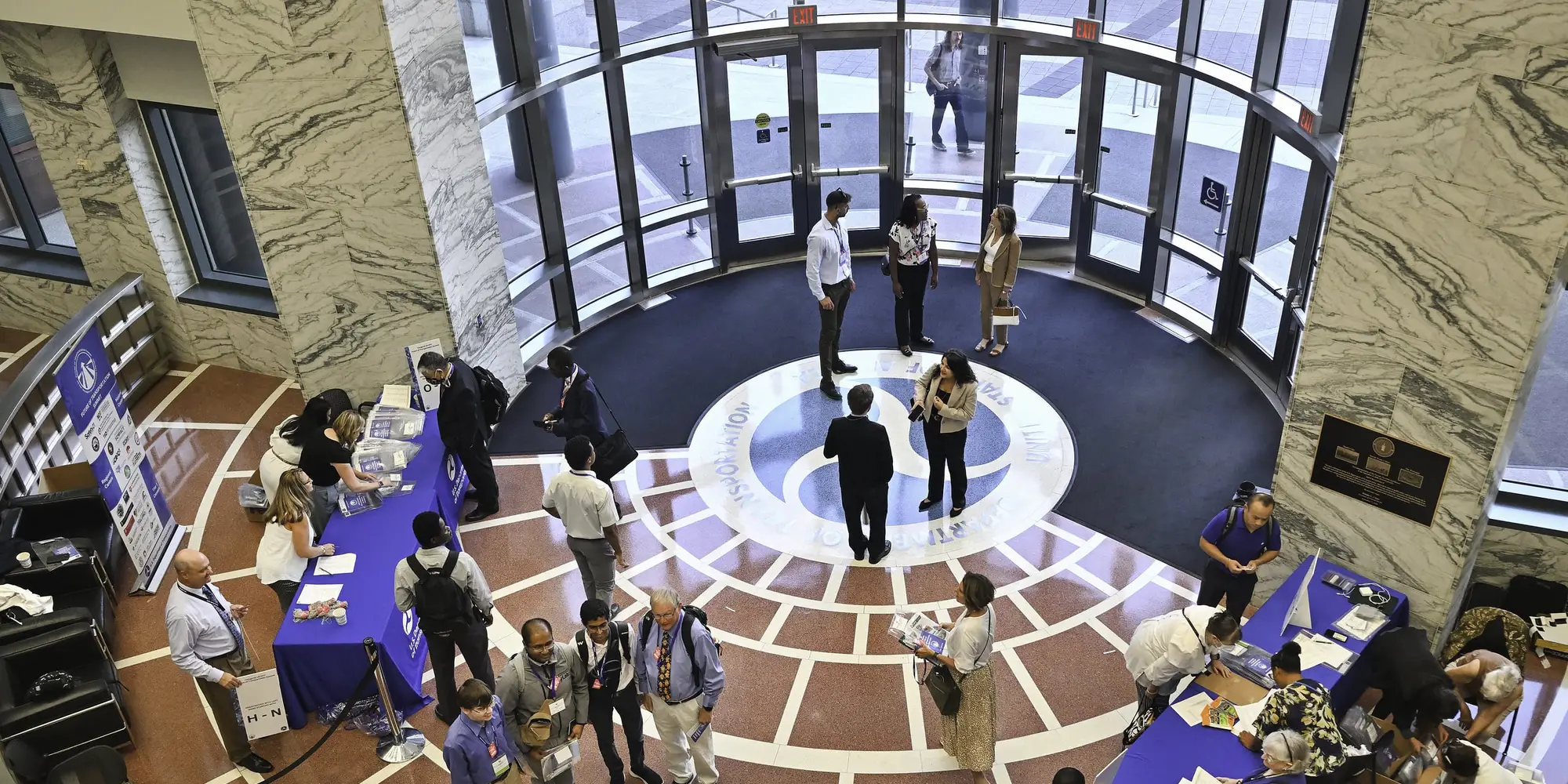
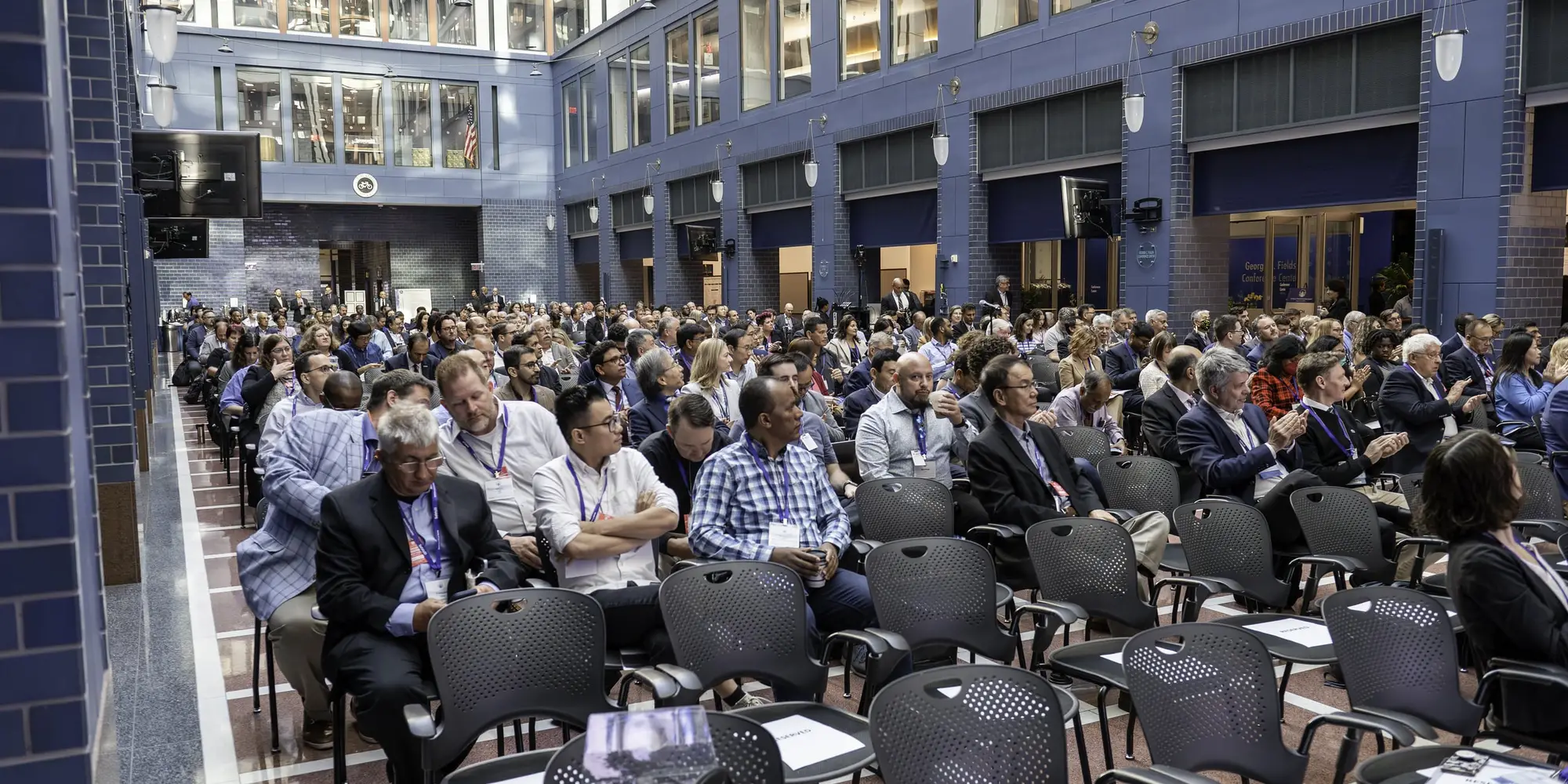
Transportation Experts Envision the Future at Inaugural DOT Summit
Media Inquiries
Experts from Carnegie Mellon University’s Safety21(opens in new window) and 39 U.S. Department of Transportation (U.S. DOT) University Transportation Centers(opens in new window) (UTCs), both FAST Act and Bipartisan Infrastructure Law-funded, led the inaugural Future of Transportation Summit(opens in new window), hosted at the U.S. DOT headquarters in Washington, D.C. Aug. 13-15.
Presented by U.S. DOT’s UTC program and chaired by Raj Rajkumar(opens in new window), the director of Safety21, the event highlighted the transformative research by UTCs in the areas of mobility, safety, infrastructure, sustainability and cybersecurity. The conference proceedings will be documented in a summit report to be shared with the UTC research community, federal and congressional leaders, and other interested parties.
Over 500 attendees, including researchers, congressional staff, federal and state agency and department staff, as well as stakeholders from industry, nonprofit and community organizations, filled the West Atrium of the U.S. DOT’s headquarters in D.C.’s Navy Yard neighborhood.
“This inaugural Future of Transportation summit really is a pivotal moment for us at U.S. DOT,” said Robert C. Hampshire(opens in new window), principal deputy assistant secretary for research and technology and chief science officer for the U.S. DOT, in his keynote address. “It’s an opportunity to bring research, development, technology and true purpose together to really help redefine the boundaries of transportation,”
Transportation innovations on display
In addition to three days of technical presentations by UTC researchers and transportation stakeholder panels with U.S. DOT modal administrators, nonprofit organizations and industry leaders, the summit also featured over 100 research posters and an afternoon of live multimodal demonstrations from nearly two dozen UTC research teams, including autonomous vehicles, drones and robots, work zone safety technology, flood monitoring, cybersecurity and innovative bridge materials.
A crowded room of attendees snapped photos as Ding Zhao(opens in new window), an associate professor of mechanical engineering, demonstrated LocoMan, a dog-like robot that can be used to make landslide monitoring safer for humans.
Ava Jahan Biglari, a Ph.D candidate in civil and environmental engineering(opens in new window) advised by Pingbo Tang(opens in new window), described her research on predictive maintenance and vehicle inspections, combining advanced technology with human expertise to manage large fleets of vehicles and prevent malfunctions.
Jahan Biglari and Tang also presented a poster at the summit, along with CMU’s Sarah Fox and Nikolas Martelaro, Sean Qian and Stephen Smith.
Outside, Rajkumar, the George Westinghouse Professor in CMU’s Department of Electrical and Computer Engineering(opens in new window), demonstrated with his team their connected and autonomous Cadillac CT6, which drove congressional staff and conference attendees around the U.S. DOT headquarters on New Jersey Avenue.
UTCs advance transportation research and technology
U.S. DOT invests in the future of transportation through its UTC program, funded by the 2021 Bipartisan Infrastructure Law. The program awards $90 million in grants to 35 national, regional and “Tier 1” UTCs to advance state-of-the-art transportation research and technology and develop the next generation of transportation professionals.
Established in 2023, Safety21 researches, develops and deploys cutting-edge technologies, policies and workforce and educational programs to address the challenges of integrating autonomous, connected, electric and shared vehicles with a vision of “safety for all.”
The goal of the UTC program is to advance U.S. technology and expertise in transportation through education, research and technology transfer and the creation and sharing of ideas, explained Rajkumar.
“For us to continue to be global leaders, we need to up our game,” he said. “We need to increase our investments. And we need to do what we do best: out-innovate the rest of the world. That, to me, is the core objective of this summit.”
Photos courtesy of the U.S. Department of Transportation.
